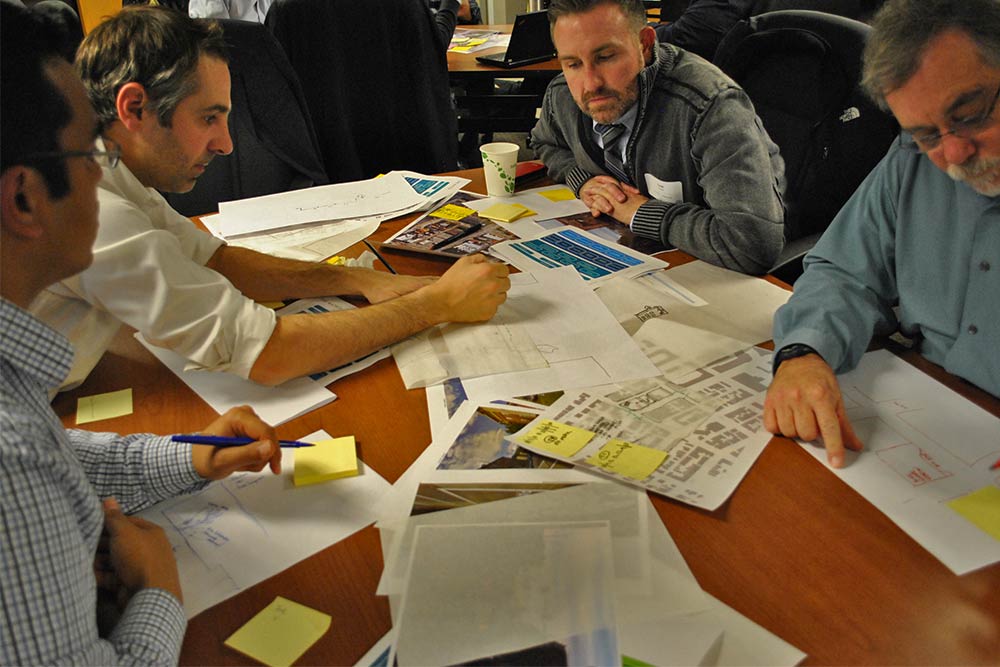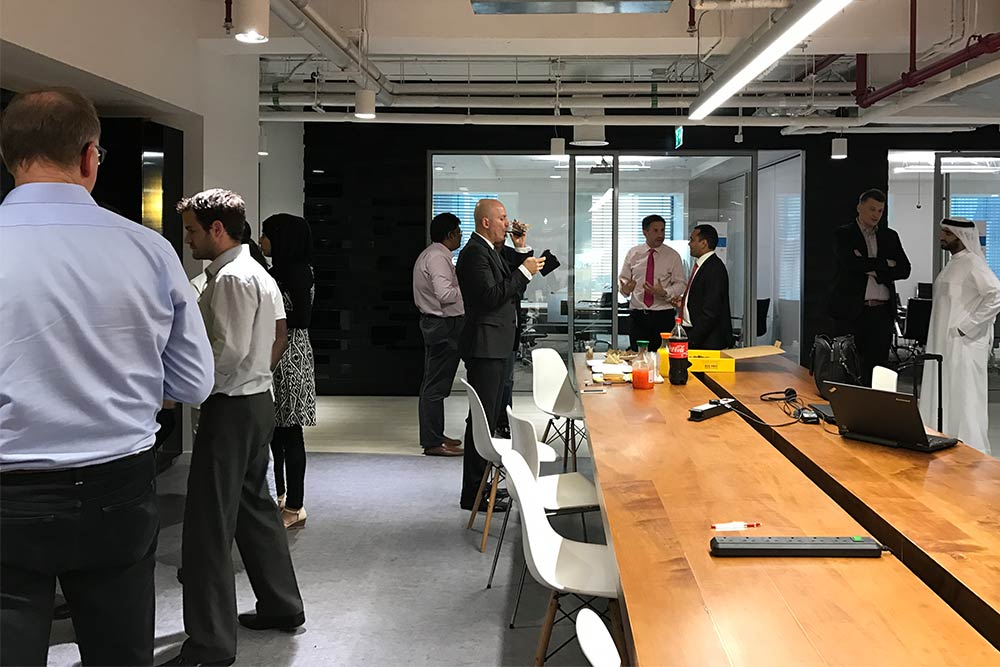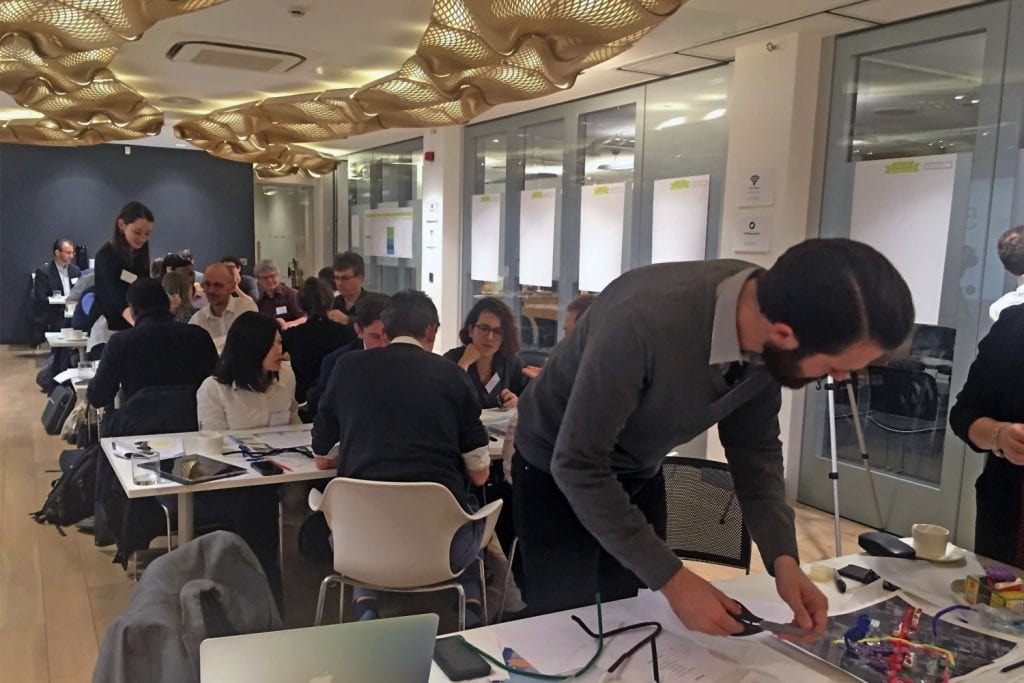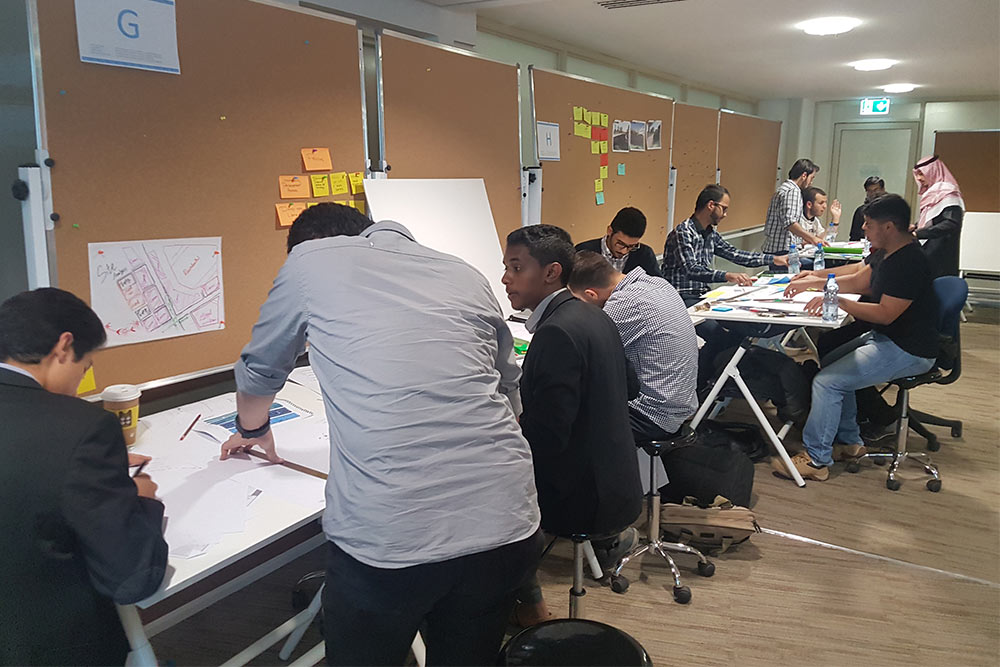New York CAV design sprint
For the New York Design Sprint, we partnered with URBAN-X, a new venture accelerator backed by MINI, who was excited to host participants representing the car and tech industry, NY State and City agencies, and urban design and planning professionals in their new premises in Greenpoint.

New York is probably one of the hardest nuts to crack for Connected and Autonomous Vehicle (CAV) technology – the density and complexity of street life could bring autonomous vehicle traffic to a standstill. At the same time, Mayor Bill de Blasio’s administration is working hard towards Vision Zero – ending traffic deaths and injuries on New York City’s streets. CAV might eventually help achieve this goal, but in the meantime, there are concerns that a transition phase could also increase traffic accidents. To better understand the potential of new technologies in the management of New York’s transport system, the NYC Department of Transportation is participating in a federally funded Connected Vehicle Pilot program. Hosting a Design Sprint in New York City was therefore intriguing from the very beginning.

The 40 experts who participated in an afternoon of discussion looked at four sites in New York City: The area around the Port Authority Bus Terminal, Columbus Circle, a crossing in the East Village, and the area in Greenpoint that leads up to the Pulaski Bridge. After a short welcome from Micah Kotch, Managing Director at URBAN-X, Rodney Stiles, Assistant Commissioner for Data & Technology at NYC Taxi and Limousine Commission, provided some background on New York City’s initiatives related to CAVs.

The Design Sprint outcomes showed that New Yorkers are keen to reverse the prioritization of individual car usage over pedestrians and cyclists, giving the latter more space in today’s urban environment. There was talk of removing on-street parking, road-diets, and sidewalk widening to increase space for non-motorized modes of transportation or even using new technologies to dynamically close streets that today are reserved for cars and use them for kids to play. Another central discussion point was how to accommodate the space needed for an ever increasing delivery economy.







Get the full picture on Connected and Autonomous Vehicles on our dedicated page.








